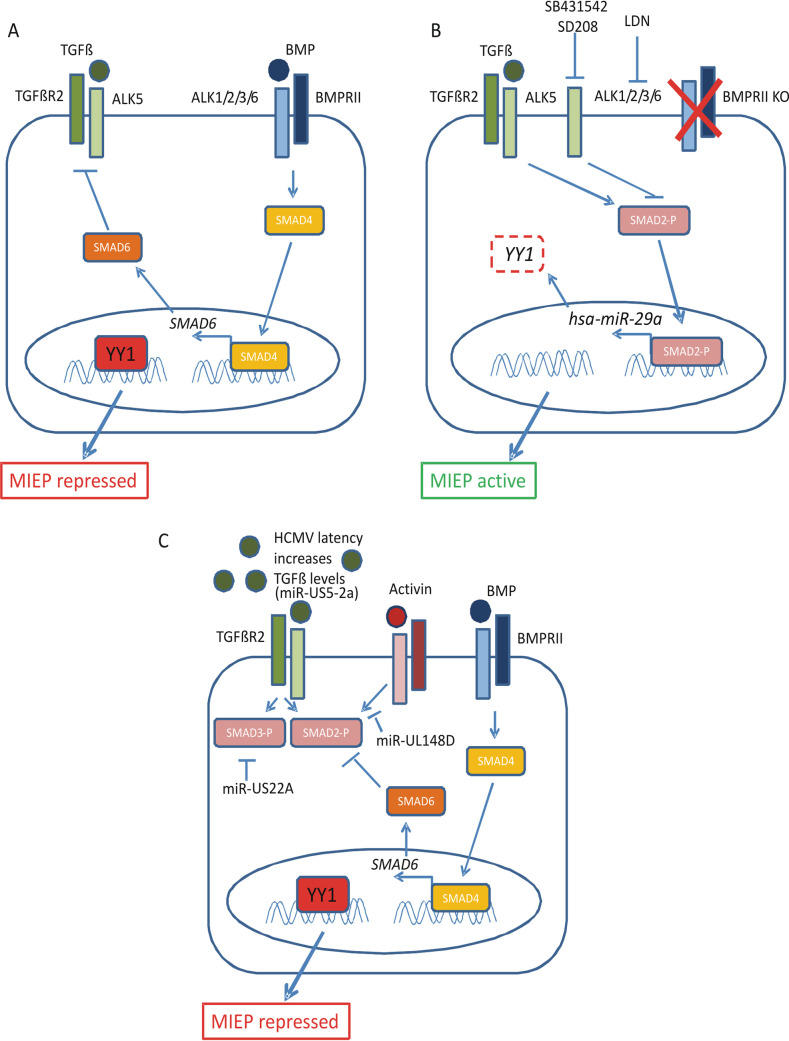FIG 6.
Mechanism for the role of BMPR2 in supporting HCMV latency and inhibition of SMAD2/3 signaling. In the presence of BMPR2 (A), there is expression of the inhibitory SMAD protein SMAD6. This prevents activation of the TGFbeta receptor by TGFbeta, which is secreted during latency, and therefore, the YY1 present in the cell is associated with the MIEP, enhancing the maintenance of HCMV latency. In the absence of BMPR2, by either direct removal of BMPR2 or inhibition of BMPR2 signaling using LDN (B), there is a lack of inhibitory protein SMAD6, and this allows the TGFbetaR to respond to the TGFbeta in the secretome, stimulating SMAD2/3 phosphorylation and leading to the expression of the miRNA hsa-miR-29a, which, in turn, causes degradation of the protein YY1. This protein is then unable to associate with the MIEP, and lytic IE gene expression can occur. The activation of lytic gene expression can be inhibited using specific inhibitors SB431542 and SD208. Finally, TGFbeta signaling is upregulated during latency (31) by viral miRNA miR-US5-2a (49), and the virus has a number of mechanisms in place to prevent TGFbeta- and activin-mediated SMAD2/3 signaling. These mechanisms include the expression of viral miRNAs US22A (49) and miR-UL148D (53) as well as the presence of BMPR2 (C).

